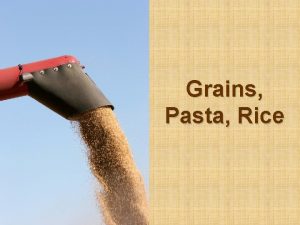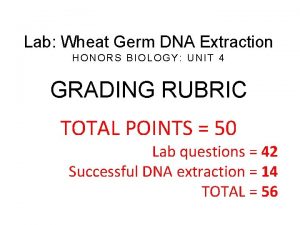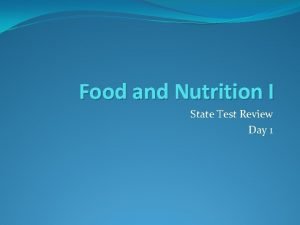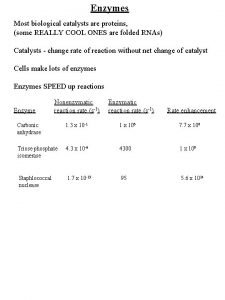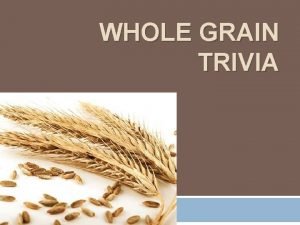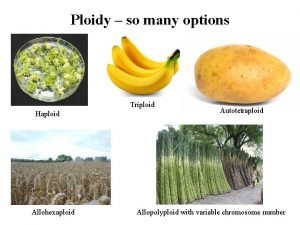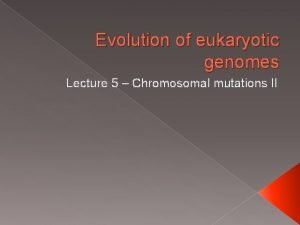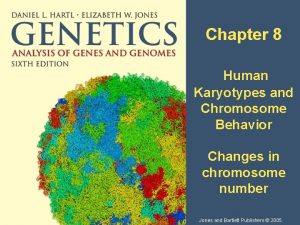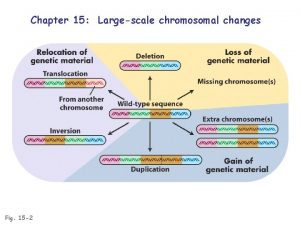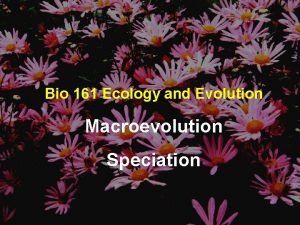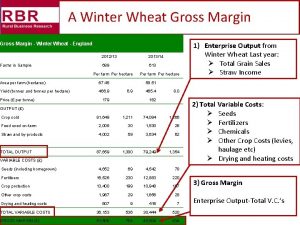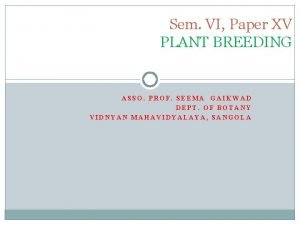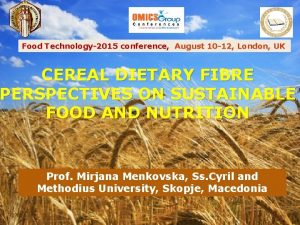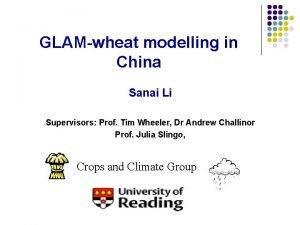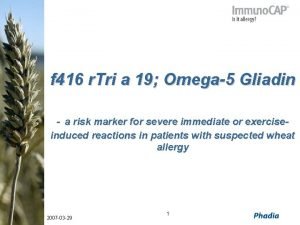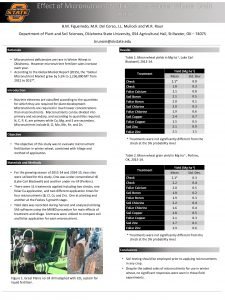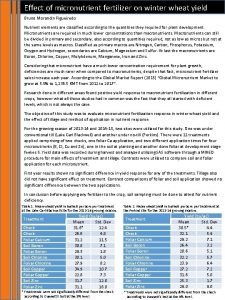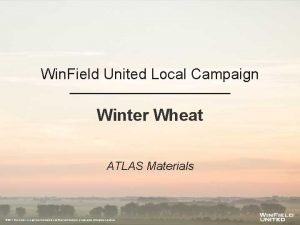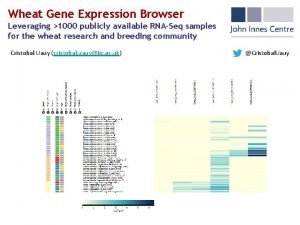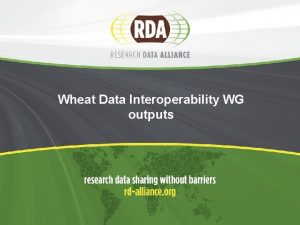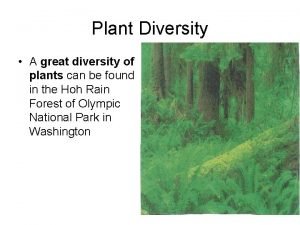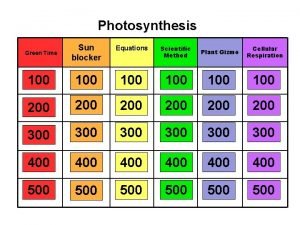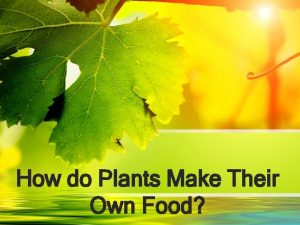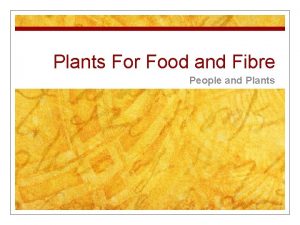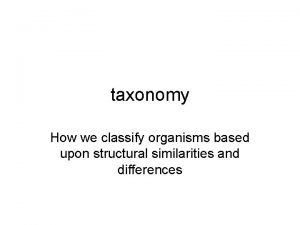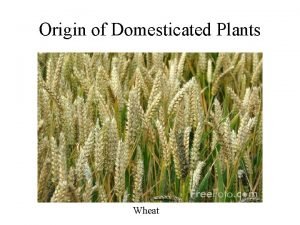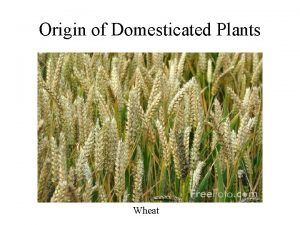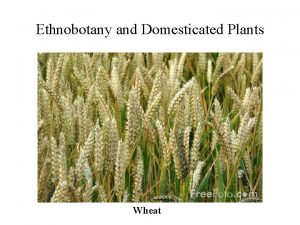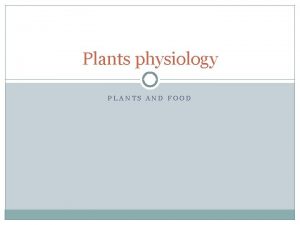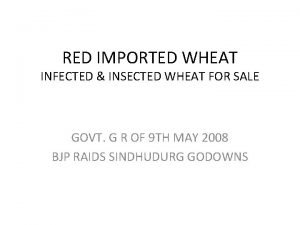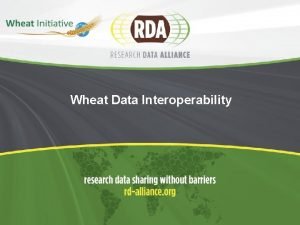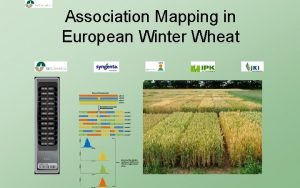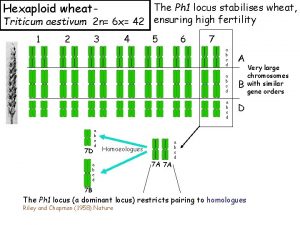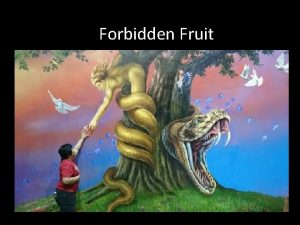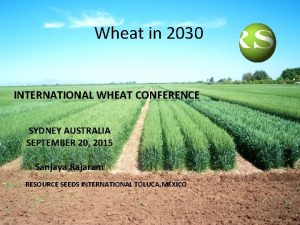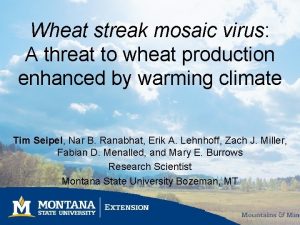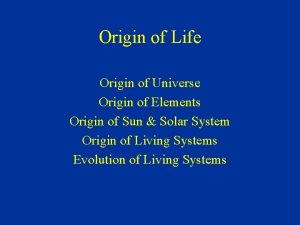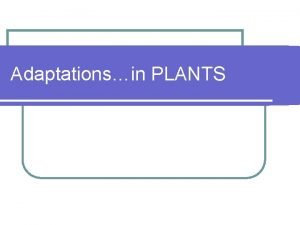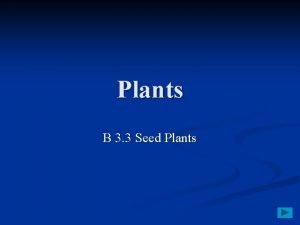Origin of Domesticated Plants Wheat Most domesticated food


































































- Slides: 66

Origin of Domesticated Plants Wheat

Most domesticated food plants have been selected for: • large plant parts • soft edible tissue • thick flesh with intense color • fruits attached to tough stems

How much domestication? • About 5000 species have been grown for human food – less than 1% of all plant species thought to exist • Today about 150 species are commercially grown for food (not including spices) • About 50 very productive species supply almost all of our caloric needs

Benefits of Domestication • 10, 000 years ago, before agriculture began, the world’s total human population was about 5 million. There was one person for every 25 square kilometers. Today we have more than 7 billion people, with a density of just over 25 people per square kilometer

As agriculture developed humans selected for: 1. Plants that provide enough calories to meet our basic energy needs. This usually comes from cereal grain or root carbohydrates. 2. We also selected for a balanced nutritional intake - this tends to develop in any system where the cultivator eats and depends upon on what he/she grows.

Dog Domesticated circa 20, 000 YA – shown in Egyptian painting – 4500 BCE

Neolithic European Thatch Houses

Vavilov centers – centers of plant diversity and areas of origin for agriculture

Plants from Near East – Fertile Crescent • • Barley - Hordeum vulgare Wheat - Triticum spp. Lentils - Lens culinaris Peas - Pisum sativum chickpeas or garbanzos - Cicer arietinum Olives - Olea europaea Dates - Phoenix dactylifera Grapes - Vitis vinifera - Wine began to be made from the grapes and beer from the grains • Flax - Linum usitatissimum – food and fiber

Barley

Lentils

Chickpeas

Date Palm

Flax

Malus sieversii – wild apple from Kazakhstan

Malus sieversii - Flowers

Malus sieversii - Fruits

Plants from China, Far East • • Millet grains - several species Rice - Oryza sativa Soybeans - Glycine max Mango - Mangifera indica Various kinds of citrus fruits - Citrus sp. Taro - Colocasia esculenta Bananas - Musa x paradisiaca

Rice

Mango

Taro

Plants from Africa • Sorghum - Sorghum sp. • Millet grains - several species (these developed independently of China) • Okra - Hibiscus esculentus • Yams - Dioscrorea sp. • Cotton - Gossypium sp. • Coffee - Coffea arabica

Sorghum and Millet

Okra

Yams

Coffee

Plants from Mexico • Corn (Maize) - Zea mays • kidney beans Phaseolus vulgaris • lima beans - P. lunatus • Peanuts - Arachis hypogaea • cotton (developed independently from Africa) • chili peppers Capiscum sp. • Tomatoes Lycopersicon sp. • Tobacco - Nicotiana tabacum • Cacao - Theobroma cacao • Pineapple - Ananas comosus • Pumpkins, squashes Cucurbita sp. • Avocados - Persea americana

Kidney Beans

Peanut

Chili Peppers – Capiscum sp.

Pumpkins and Squashes

Plants from Peru • Potato -Solanum tuberosum and many related species • Quinoa - Chenopodium quinoa • Amaranth – Amaranthus (3 species) • tomatoes and peanuts may have really originated in Peru and then been taken to Mexico

Potato

Quinoa

First ethnobotanical rule of food production • In indigenous agriculture where the crops are consumed and not sold, there evolves and is maintained a reasonable level of nutritional adequacy

Second ethnobotanical rule of food production • In indigenous agriculture where the crops are grown mainly or only for sale, there develops an expanding surplus of food. The overall objective of such agricultural systems is to replace a pre-existing (natural) plant community with a cultivator-made community

It then follows that: If the potentially unstable increase in food production and human population is to be maintained, it must be consistent with three aims: 1. To operate at a maximum profit (labor/yield). 2. To minimize year-to-year instability in production. 3. To operate so as to prevent long-term degradation of the production capacity of the agricultural system.

Mexican Corn Growing

Mexican Corn Varieties

Squanto and Pilgrims

North Eastern Native American Groups

Three Sisters Mound System

Three Sisters Mound System

Three Sisters Planting Scheme

Benefits of Three Sisters Mounds • In the Northeast where ground was frequently cold and damp in early spring, mounds allowed the soil to warm up and drain more quickly • Mounds allowed an increase in soil organic matter by repeatedly incorporating dead plant material with soil in mounds • Decomposition of dead plant material increased soil nutrients; also growing beans which are N-fixers increased soil N for all plants in the mound • Mounds minimized soil compaction (people did not walk on mounds, but around them) and reduced soil erosion as fields were not constantly plowed or dug up • Mound system allowed easy regulation of plant spacing and plant populations

Darwin on Artificial Selection “Although man did not cause variability and cannot even prevent it, he can select, preserve, and accumulate the variations given to him by the hand of nature almost in any way which he chooses; and thus can certainly produce a great result… Selection by man may be followed either methodically and intentionally, or unconsciously and unintentionally… We can further understand how it is that domestic races of plants often exhibit an abnormal character, as compared to natural species, for they have been modified not for their own benefit, but for that of man. ”

The Green Revolution • The Green Revolution refers to the transformation of agriculture that began in 1945, largely due to the life work of Norman Borlaug. One significant factor in this revolution was the Mexican government's request to establish an agricultural research station to develop more varieties of wheat that could be used to feed the rapidly growing population of the country.

Norman Borlaug

Green Revolution Advances • The main technological development of the Green Revolution was the production of novel wheat cultivars. Agronomists bred cultivars of maize, wheat, and rice that are generally referred to as HYVs or “high-yielding varieties”. HYVs have higher nitrogen-absorbing potential than other varieties. Since cereals that absorbed extra nitrogen would typically lodge, or fall over before harvest, semi-dwarfing genes were bred into their genomes. A Japanese dwarf wheat cultivar (Norin 10) wheat was instrumental in developing Green Revolution wheat cultivars. IR 8, the first widely implemented HYV rice to be developed by IRRI, was also a dwarf variety.

Progression of Wheat Dwarfism

Development of Rice Dwarfism



Increase in global corn production

Increase in Big 3 Grains

US Corn Production and Climate

Criticisms of Green Revolution • High yields lead to unsustainable increases in human population – like Ireland potato • HYV grains require high fertilizer inputs and mechanized agriculture – benefits large farmers, agribusiness but not small farmers • Change in diet quality – Green Revolution favors cereal grain monocultures; traditional agriculture is polyculture with many species and high nutrient diversity

Spread of Southern Corn Leaf Blight

Southern Corn Leaf Blight

Close up of Southern Corn Leaf Blight

Southern Corn Leaf Blight – damage to ear

Seed Savers, Decorah, Iowa

Seed Savers, Decorah, Iowa

Stowe, England – Apple Festival

Stowe, England – Apple Festival

Stowe, England – Apple Festival
 A farmer plants corn and wheat on a 180-acre farm
A farmer plants corn and wheat on a 180-acre farm Non domesticated animals and uncultivated plant life
Non domesticated animals and uncultivated plant life Simile comparing a tree with a domesticated animal
Simile comparing a tree with a domesticated animal Nomadic peoples who herded domesticated animals
Nomadic peoples who herded domesticated animals Medicinal plants definition
Medicinal plants definition Vascular plants
Vascular plants Vascular plants vs nonvascular plants
Vascular plants vs nonvascular plants Characteristic of non flowering plants
Characteristic of non flowering plants C3 plants vs c4 plants
C3 plants vs c4 plants Unit 2 food food food
Unit 2 food food food Grazing food chain diagram
Grazing food chain diagram Peter the devil has asked for you
Peter the devil has asked for you Corn minus the hull and germ
Corn minus the hull and germ Secondary processing of wheat
Secondary processing of wheat The clouds smiled down at me
The clouds smiled down at me Wheat germ dna factory
Wheat germ dna factory Food and nutrition 2 state test review
Food and nutrition 2 state test review Wheat germ acid phosphatase km vmax
Wheat germ acid phosphatase km vmax Wheat germ dna factory
Wheat germ dna factory Some natural resources such as wheat and cattle are
Some natural resources such as wheat and cattle are I could sleep forever figurative language
I could sleep forever figurative language Flour is always made of wheat. true false
Flour is always made of wheat. true false Matthew 13 37
Matthew 13 37 Why are triploid plants seedless
Why are triploid plants seedless Ikatan glikosidik adalah
Ikatan glikosidik adalah Aberrant euploidy
Aberrant euploidy Wheat adalah
Wheat adalah Wheat
Wheat Wheat
Wheat Wheat
Wheat Australian wheat board
Australian wheat board Wheat gross margin
Wheat gross margin Colbert wheat thins
Colbert wheat thins The wheat and tares
The wheat and tares Importance of plant breeding in agriculture ppt
Importance of plant breeding in agriculture ppt Primary processing of cereals
Primary processing of cereals Flowers of grasses are
Flowers of grasses are Grassland wheat
Grassland wheat Wheat yield
Wheat yield Tri a 19 omega-5 gliadin wheat
Tri a 19 omega-5 gliadin wheat +winter +wheat +micronutrient
+winter +wheat +micronutrient +winter +wheat +micronutrient
+winter +wheat +micronutrient Wheat seeds atlas
Wheat seeds atlas Wheat expression browser
Wheat expression browser Wheat initiative
Wheat initiative Mulika spring wheat
Mulika spring wheat Accelerate wheat
Accelerate wheat Antioxidants means
Antioxidants means Cheyenne nicole wheat
Cheyenne nicole wheat Alligation method
Alligation method Plant evolution cladogram
Plant evolution cladogram The food that plants produce during photosynthesis is
The food that plants produce during photosynthesis is Steps in photosynthesis
Steps in photosynthesis How photosynthesis takes place
How photosynthesis takes place Green plants make their own food by photosynthesis
Green plants make their own food by photosynthesis What is horticulture
What is horticulture Food from plants
Food from plants How indoor plants make their food
How indoor plants make their food Plants for food and fibre
Plants for food and fibre Most general to most specific classification
Most general to most specific classification Most general to most specific classification
Most general to most specific classification Allah the most gracious
Allah the most gracious The most
The most Ponceau pronunciation
Ponceau pronunciation Guddi baji
Guddi baji Most general to most specific classification
Most general to most specific classification Most general to most specific classification
Most general to most specific classification












